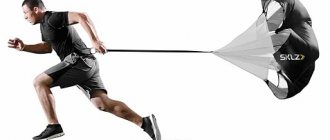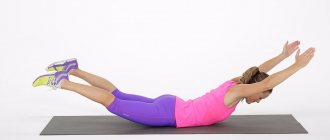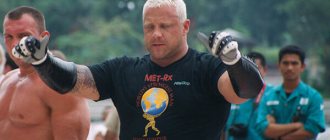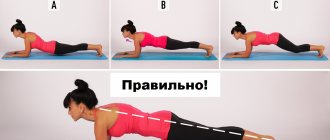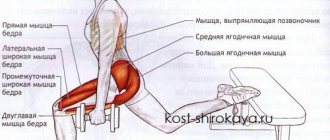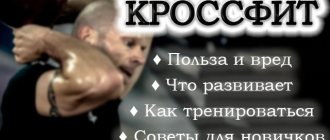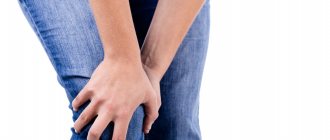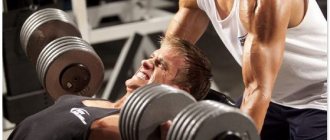Among abdominal exercises, lying leg raises take pride of place. This simple exercise can be performed by both a child and an elderly person. Well-trained athletes perform it daily, using various methods of complication so that not only the lower abs are worked, but also the entire abdominal muscle.
The exercise is suitable for women, young girls, and even people who have undergone surgery. It will be useful to everyone who cares about their own health, during morning exercises and for the prevention of spinal diseases.
What's the benefit?
This exercise has a positive effect on the tone of the body as a whole. With its help, you can perfectly increase the flexibility of the hip joints and develop coordination of movements.
Leg raises while lying on your back strengthen the abdominal muscles, hips and lower back. Increases a person's endurance.
Straight leg lowering
This exercise is also called “Scissors”, and is one of the top ten for the gluteal muscles, along with the Bicycle lying on the floor. Difficulty is high. The muscles of the thighs, buttocks, and lower abdominal muscles are involved. You can learn about the 4 difficulty levels of “Scissors” here.
- Starting position: lying on your back, both legs raised at an angle.
- Alternately lower the right and left straight legs.
The exercise can be made more difficult by lowering both legs at the same time.
More details in the video:
https://youtu.be/o8iYWJeIIqY
https://youtu.be/KaaZdXYgPGQ
Execution options
The versatility of this exercise lies in the fact that, depending on your physical fitness, you can choose the appropriate option for yourself:
- raise your legs one by one or at the same time;
- raise both arms and legs;
- use leg weights;
- use a horizontal bench;
- raise your legs while lying on your stomach.
Features and Benefits
Weights for arms and legs are special “cuffs” worn on the ankles and wrists, with a weight sewn inside. Even without knowing why they are needed, it is easy to guess that in this way additional load is provided when performing cardio and strength exercises on the legs, the thigh and buttock are more heavily loaded. This provides faster and more obvious results from training. The category of strength exercises mainly includes lunges, leg swings, cardio - walking at a fast pace, jogging (outdoors or in the gym), jumping.
Weighting equipment is an equipment that is most often in demand by girls who want to work out the muscles of the thighs, buttocks, and abs. Men consider it “frivolous”, but it is quite suitable for them too. You just need to choose the right weight and create a set of exercises. This device is very convenient for training at home due to its compactness. Weights are produced with a weight of 0.5–5 kg (more is already dangerous for the musculoskeletal system).
In principle, you can use regular dumbbells instead. But it's not nearly as comfortable as ankle and wrist cuffs. For example, running with dumbbells requires noticeable changes in technique. Not to mention the fact that while running you can drop the projectile, causing injury to yourself. Exercises with arm weights are not particularly popular.
Performing exercises with leg weights will be useful for those who want to achieve the following goals:
- tone the thigh, gluteal muscles, abs or restore it after a long break in exercise;
- increase the effectiveness of cardio training (even just running with weights is much healthier than without them);
- increase the number of calories burned during the same exercise time;
- make the blow stronger (demanded by those who practice martial arts and martial arts);
- combine business with pleasure (if you have to walk a lot during the day, running weights will turn walking into a full-fledged fitness workout);
- work on general endurance and strengthening the cardiovascular system.
The undoubted advantages of using weighting include:
- Affordable cost, availability of inventory. It is also quite possible to make weights for arms and legs with your own hands. This is, in fact, just a cuff reinforced with a metal plate or bulk material.
- Pronounced effect for those who want to lose weight. Moreover, the figure, if you give stress to your legs and arms at the same time, becomes slimmer evenly.
- Versatility. Weights allow you to complicate any workout - walking, running, dancing, jumping, yoga, Pilates.
There are also certain disadvantages:
- Increased stress on the ankles, especially when running with weights on the legs and jumping. There are no muscles there that can support large amounts of weight, so you won’t be able to increase weight indefinitely. If you practice running with weights too often and sharply increase their weight, your hip joint, knee, or ankle may not be able to withstand it.
- There is a risk of getting a new injury if you have a history of knee injuries, problems with joints, and tendons.
- The projectile is unsuitable for obtaining relief, a significant increase in the volume of the gluteal and thigh muscles.
The benefits and harms of exercise are first assessed in consultation with your doctor in the presence of any chronic diseases. Clear contraindications are varicose veins, any joint pathologies, incompletely healed injuries, unfinished recovery period after surgery, diagnosis of obesity.
Affordable cost, availability of inventory Pronounced effect
Versatility
The principle of gradualism
You should not perform this exercise by starting with the most difficult option unless you are a professional athlete. The load must be increased carefully so as not to harm the body.
The abdominal muscle needs time to develop, grow, and build endurance, so the principle of gradually increasing the load should be a priority.
For beginners
Untrained people should start by lifting their legs alternately while lying down. In this case, the arms should be extended along the body, and the lower back should be pressed tightly to the floor. Legs are raised alternately to 45 degrees
- Exercises in the gym - tips for choosing the best set of exercises. Recommendations for beginners and tips on how to practice correctly (85 photos)
A set of exercises for gaining weight - basic exercises and recommendations for selecting weights for exercises
We perform squats with dumbbells - a description of the technique of performing the exercise. Subtleties and secrets of squats for girls (125 photos)
It is advisable to fix the leg in the upper position for two seconds and then smoothly lower it. Exhalation occurs at maximum load. Inhale while lowering. The exercise is performed 10-15 times.
In the postoperative period, it is allowed to raise not a straight leg, but a slightly bent leg. You can lift your head off the floor a little. It is important to monitor how you feel and stop doing the exercise if pain occurs.
Women also do not want to overload their abdominal muscles, especially during the postpartum period.
Taking the leg back
Difficulty is low. Works the back of the thigh and gluteal muscles.
This is probably one of the simplest and most popular exercises with small weights for the buttocks. The thigh muscles are also involved.
- Starting position - standing, join your feet, put your hands on your waist.
- As you exhale, gently move your straight left leg back as far as it will go, maintaining a straight and stable position.
We perform 10-15 repetitions and repeat the exercise for our right leg.
More details in the video:
https://youtu.be/JBiCgmOagL8
For future athletes
If you set aside at least three days a week for sports, you can move on to the classic exercise: lifting both legs. Lifting angle – 60 degrees. Delay in the upper position – 2 seconds. At the same time, the shoulders, neck and head remain motionless.
Want to make the exercise more challenging? Do not touch the floor with your feet when lowering them; immediately perform the next rise.
Another way to make it more difficult is to hold your legs in the top position for more than two seconds. Depending on your condition, you can perform up to 15 movements in three approaches.
Three gluteus maximus muscles
Did you know that the gluteus maximus muscle is the largest muscle in the entire human body? Its job is to support the torso in an upright position, which is the reason for its size and power.
As the name suggests, it is the largest and closest to the surface muscle of the entire gluteal muscle group.
The function of the gluteus maximus muscle is mainly to extend the upper legs (hips) - for example, when rising from a squat position. Another example of including this muscle in work is lifting the torso tilted forward. Picture yourself swinging a kettlebell and you'll get a good idea of how this muscle works.
Hip extension also occurs during deadlifting, pushing off the legs during running and skating, and simply while swinging the leg.
This muscle is also involved in turning the leg - for clarity, imagine, for example, a duck walk.
The gluteus medius is the smallest of the gluteal muscle group, located beneath the gluteus maximus and provides stability to the hip joint, especially when standing on one leg. Thus, when walking or running (where the legs are used in turns) or climbing stairs, the gluteus medius muscle is tensed to prevent the pelvis from sinking to one side.
Moreover, the gluteus medius (and minimus) are involved in hip abduction.
It is the smallest of the gluteal muscle group, located directly below the gluteus medius. Its main function is to provide stability to the hip joint. It works together with the gluteus medius muscle.
I hope that this little anatomical excursion did not confuse you. Essentially, that's all you need to know to perform the exercises. Well, let's move on to...
Exercise with weights
It is ideally suited for physically developed people. The starting position is the same - lying on your back. Weights are placed on the ankles. It can be with constant or variable weight.
A dumbbell held by your feet is suitable as a weighting agent. The legs are raised at an acute angle and held for several seconds. Then they smoothly lower and, without touching the floor, move up again.
The best dumbbell press - advice from professionals and basic variations of the basic exercise (75 photos)How to do the plank exercise? Step-by-step description of the correct technique and features of the exercise
Yoga stretching exercises - complexes for beginners and stages of achieving high results (110 photos and videos)
The exercise can be performed in two or three sets up to 30 times.
The accelerated pace of execution perfectly builds endurance.
Crossfit
Now let's move on to the basic exercises from the CrossFit methodology, which are now also quite often used in the gym.
In particular, such exercises include:
- push ups;
- burpees;
- jumping on a cabinet;
- rock climber
Again, you need to balance the load with your joints. In particular, if you are doing jumping burpees, you need to make sure that the weights do not put too much stress on your ankles. Otherwise, even in push-ups, such additional load will bring useful results.
Note. In general, it is not recommended to purchase weights weighing more than five kilograms, since such a load is considered excessive for the joint-ligamentous apparatus.
Abs workout
The lying leg raise exercise is not intended to form sculpted abs. To achieve the desired result, simple leg lifts should be alternated with special abdominal exercises.
These include all kinds of twists (oblique, double, etc.), hanging leg raises, and a popular exercise for the abs in bodybuilding – torso lifts on a Roman chair. These exercises not only create aesthetic abs, but also improve the condition of all internal organs.
Characteristics of leg weights or how not to make a mistake with the choice?
Modern weights are made of durable and natural fabric, most often their base consists of cotton, and are equipped with convenient adjustable fasteners (usually Velcro) for easy fixation. In appearance, weights for legs and arms resemble cuffs, inside of which there is bulk material, thereby achieving the required load. Their weight depends on the amount of internal contents of weighting agents. In addition, on sale you can find plate weights for legs and arms, the advantage of which is the ability to independently set their weight and adjust the load. Currently, leg weights are available in a weight range from 0.5 to 5 kg, sold as a set, and have different widths and fabric densities, which allows you to choose the right one for each specific buyer.
Load calculation
For the results to be noticeable, the lying leg raise exercise is performed daily during exercise. First, you should do two sets of ten movements without weights.
Gradually, the load increases, and at the same time muscle development and endurance formation occur. Over time, the relief of the “cubes” becomes noticeable. But you will already have to do other exercises for the abdominal muscles.
The main guideline is your well-being. The load can be either increased or decreased, and consultation with a specialist is simply necessary.
Harm and contraindications
It is important to monitor your breathing. Improper breathing while walking can cause more harm than good. When walking quickly, there is a risk of harming your knee joints, so watch the condition of your knees. If they start to hurt you, it is better to postpone classes for a while and consult a specialist.
There are very few contraindications to this sport. Let's list them:
- Viral infections
- Recent surgeries
- Chronic diseases in acute form
- High blood pressure
- Flat feet
- Hand and joint injuries
- Deviations in the development of the musculoskeletal system
- Heart disease
In all these cases, you need to consult a doctor about the possibility of walking at a leisurely pace for short distances. If you have flat feet, the load during walking is distributed incorrectly, and you can harm your condition even more.
What not to do
It is very harmful and even dangerous for health to perform the exercise on a cold floor, and even more so under air conditioning or in a draft.
Facial exercises - types of the best procedures and techniques for performing the exercises necessary for a facelift (135 photos and videos)Review of exercises for men - the most effective comprehensive workouts at home and in the gym (120 photos and videos)
A set of exercises on simulators - programs for beginners and training tips for women and men (105 photos)
When lifting your legs while lying down, you should not lift your shoulders and head off the floor. The photo below illustrates this common mistake well.
Performing the exercise in jerks leads to indiscriminate contraction of the body muscles, which negatively affects overall well-being.
If there is no delay during the maximum leg lift, this reduces the effectiveness of the exercise.
You should also not exercise “through pain.” Movements should bring satisfaction, not suffering. Any discomfort is a reason to reduce the load.
Human walking speed
Squeeze your shoulder blades, tighten your stomach, raise your head and go out into the park or onto the street. Increase your walking time and speed gradually. In sports medicine, there is such a classification of walking.
- Very slow Up to 3 km/h Up to 70 steps
- Slow 3-4 km/h 70-90 steps
- Average 4-5.5 km/h 90-120 steps
- Fast 5.5-6.5 km/h 120-140 steps
- Very fast Over 6.5 km/h Over 140 steps
Men from 40 to 55 years old can gradually reach a speed of up to 10 km/h, after 55 years old - up to 7 km/h. Women under 40 years old can move at a speed of 10 km/h, from 40 to 55 years old - 7 km/h, over 55 years old - 6 km/h.
Walking can be done in any weather two hours before or two hours after meals. Start walking four times a week for 45 minutes. Gradually, the cardiovascular system will adapt to the stress, and you will notice positive changes. In a trained person, the organs at rest work more economically, and when necessary they are very resilient.
To enhance the healing effect, you can walk with dumbbells, in which case the muscles of the upper body will work more actively. At first, do no more than half of your workouts with dumbbells; their weight should be no more than 600 grams. If you feel normal, then after two months you can wear dumbbells for the entire session.
The stride length should be comfortable. Place your heel on the ground first and roll your foot from heel to toe. As you increase your speed, lean forward slightly. The tilt should start from the ankles, since bending from the hips causes a feeling of discomfort in the lower back. How many steps you take per minute will depend on your stride length.
A speed of 80-120 steps per minute is considered automatic; over 120 steps per minute requires volitional effort and physical effort. The elbows should be bent at right angles, and any movement of the arms should start from the shoulder. Keep your head straight, in line with your spine. Relax your shoulders slightly back and down.
It is important to breathe properly when walking. It is important to coordinate breathing with the rhythm of movement; there should be no shortness of breath
You need to breathe through your nose. You can do breathing exercises while walking. For example: inhale for 3-4 steps, exhale for 5-6 steps. During rest, you need to breathe deeper. When walking for a long time, you can drink juice or sweet water. It is better to walk in sneakers with thick soles with notches; the heel must be strong to make walking safe.
And although walking is simple and accessible, it must be taken seriously. Be sure to create a training program for yourself with a gradual increase in loads. Keep a diary, noting the kilometers traveled. And as soon as you write the first four-digit number in your diary, you can increase the load. Good luck and health to you!
Time to workout
Physical activity is not compatible with eating. And not only because the feeling of heaviness and nausea will interfere.
A full stomach will cause the exercises to be performed incorrectly, and there will be no benefit from the exercise. At least an hour, or better yet two, should pass between lunch and training.
Who can do it and where to start
Walking, as the simplest and most accessible form of physical activity, can be practiced by people of absolutely any age. Begin to gradually introduce short walks, gradually increasing the duration to 1 hour a day.
But, like any type of physical activity, walking has a number of contraindications:
- High blood pressure;
- colds and other acute diseases (especially if they are also accompanied by an increase in body temperature, chills and poor health);
- diabetes mellitus and chronic kidney disease;
- cardiovascular disorders, stroke and heart attack in the recent past.
Proper nutrition
The “lying leg raise” exercise may be ineffective if the diet is not followed. The abs will simply be masked by a layer of fat in the abdominal area.
That is why it is useful to count calories daily, monitor your diet, and properly dose physical activity.
How to lose weight by walking
If you have seriously decided to lose weight through walking, then you will have to do it every day! Otherwise, if you do this only from time to time, you will not see results.
At first, if your body is not yet trained, it will be enough to spend 30 minutes walking. However, the time should be gradually increased (at least up to 1 hour).
Younger and healthier people should focus on speed and pace; older people (or those who have any illnesses) should prefer long walking, but at a moderate pace.
If possible, it is better to go in the morning. Firstly, fat deposits are burned more easily in the morning. And secondly, such a walk will give you energy and positive impressions for the whole day. Although it is believed that walking before bed is very beneficial.
Remember that any physical activity should begin with a warm-up. And walking is no exception. Therefore, first walk a little at a slow pace: let your muscles warm up.
To avoid dehydration, always take a bottle of water.
Finish walking, reducing the pace gradually: let your body recover.
Photo instructions on how to do lying leg raises correctly
https://youtu.be/ayS0cvDQ6tg
https://youtu.be/bKXVFerLlUc
